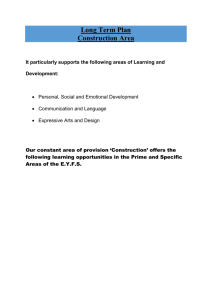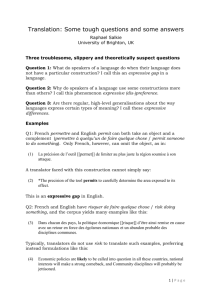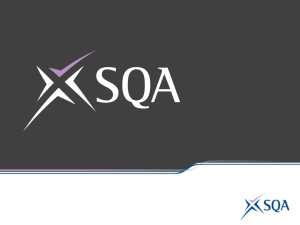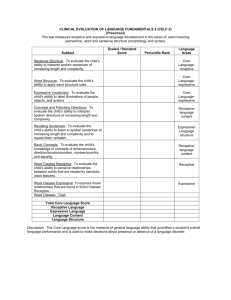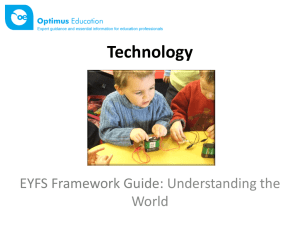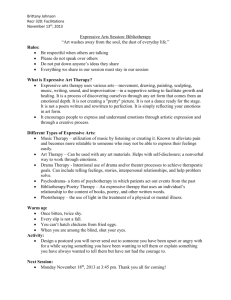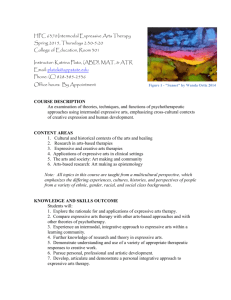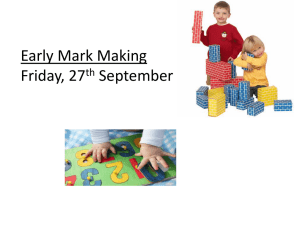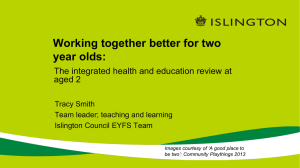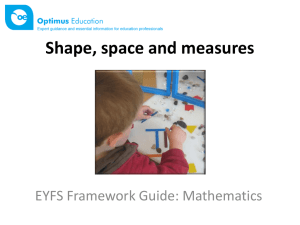Personal social and emotional development: PSED
advertisement
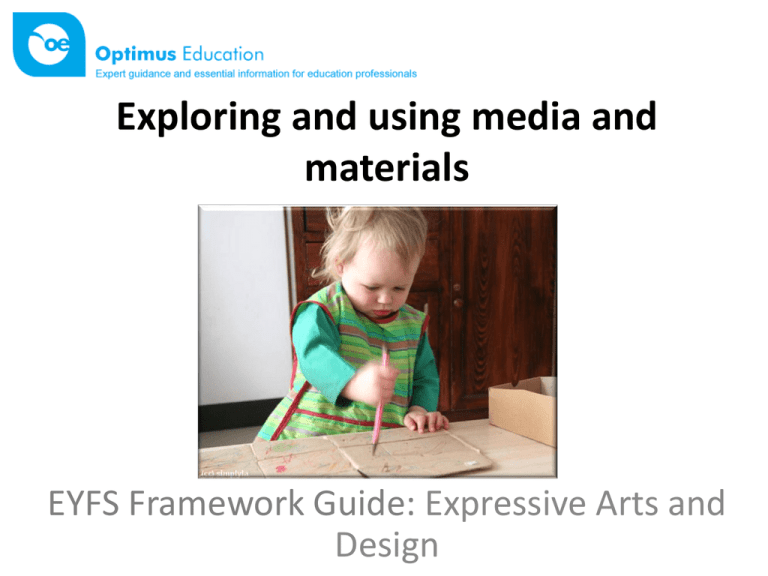
Exploring and using media and materials EYFS Framework Guide: Expressive Arts and Design What is Expressive Arts and Design? In the EYFS framework, Expressive Arts and Design (EAD) is one of the four specific areas of learning. Expressive Arts and Design involves supporting children to explore and play with a wide variety of media and materials, as well as providing opportunities and encouragement for sharing their thoughts, ideas and feelings through a variety of activities in art, music, movement, dance, role-play and design technology. Two aspects of Expressive Arts and Design in the EYFS Exploring and using media and materials Being imaginative Developing skills in exploring and using media and materials Expressive Arts and Design covers the area of learning and Development which was called ‘Creative Development’ in the original EYFS framework, along with ‘Designing and Making’ which was found in ‘Knowledge and Understanding of the World’. Exploring and using Media and Materials covers previous aspects of ‘Being Creative – responding to Experiences, Expressing and Communicating Ideas’, ‘Exploring Media and Materials and Creating Music and Dance’ - and ‘Designing and Making.’ Children’s learning and development in this area will be enhanced as they sing songs, make music and dance, and experiment with different ways of ding these activities. As they develop they will use and explore a variety of materials, experimenting with colour, design, texture, shape and form. How can we support young children to explore and use media and materials? Attitudes and ethos The physical environment Links to the prime areas of learning Supporting different ways of learning Building partnerships with parents Our attitudes and ethos • Do all practitioners show interest in, and knowledge of, the creative and expressive arts and design and what it means for babies, toddlers and young children? • Are all staff aware of the importance of allowing young children to explore media and materials in their own way, without being concerned about an end product? • Do all practitioners understand the importance of young children having opportunities to use their gross motor skills as a precursor to developing the fine motor skills which are essential for later mark making? • How well do all practitioners understand the process of design technology and know what this means in the context of young children’s learning and development? • As a setting do we use any of our professional development time to share and practise our skills and knowledge in the area of expressive arts? Physical environment • Do all practitioners have the skills and confidence to create a learning environment which enable children to develop their skills, understanding and techniques in using paint, clay, fabrics, musical instruments, tools and equipment? • How regularly do we review the quality of the materials and equipment which we provide for children to use to ensure that they always have access to a wide range of high quality equipment and resources to extend their learning and development? • Are babies and toddlers given daily opportunities to explore different media and materials? • Could we improve the way in which the outdoor environment has been planned to make the most of opportunities for encouraging children to experiment with the visual and performing arts and design technology? • Do we use music to change the mood in our setting at different times of the day? Links to the prime areas of learning Expressive Art and Design begins at a very early age, long before a child is three. ‘Practitioners working with the youngest children should focus on the prime areas, but also recognise that the foundations of all areas of learning are laid from birth’- for example literacy in the very early sharing of books.’ [Tickell Review of the EYFS, 2011] • Are babies and toddlers given a profusion of multi-sensory experiences? • Do we make provision for the children to engage in expressive arts and design activities which help develop their manual dexterity? • Are children encouraged to work collaboratively when they explore media, materials and design? • Could we improve the way we draw on the different cultures and ethnicities of the families who attend our setting to enrich the experiences we provide in expressive arts and design? Supporting different ways of learning • Do we provide challenging, but achievable, activities suitable for children of all ages, such as covering the floor with large sheets of paper for the children to crawl on and mark make with crayons or paint? • Do we value the ways in which individual children express themselves in paintings and drawings without trying to influence what they produce? • Are all staff aware that is the learning process which is important, not the product? • Do we provide resources and experiences which will engage the interests of boys as well as girls – for example painting on a large scale out of doors? Building partnerships with parents • Could we improve the way in which we give information to parents about the importance of children developing their individuality and interests through exploring and using different media and materials? • How well do we explain to parents that it is the learning process not the product which matters? • Can we help them to value the representations which their children produce? • Do we invite parents and other family members into our setting to share their interests, talents and skills in using media, materials and design technology?
